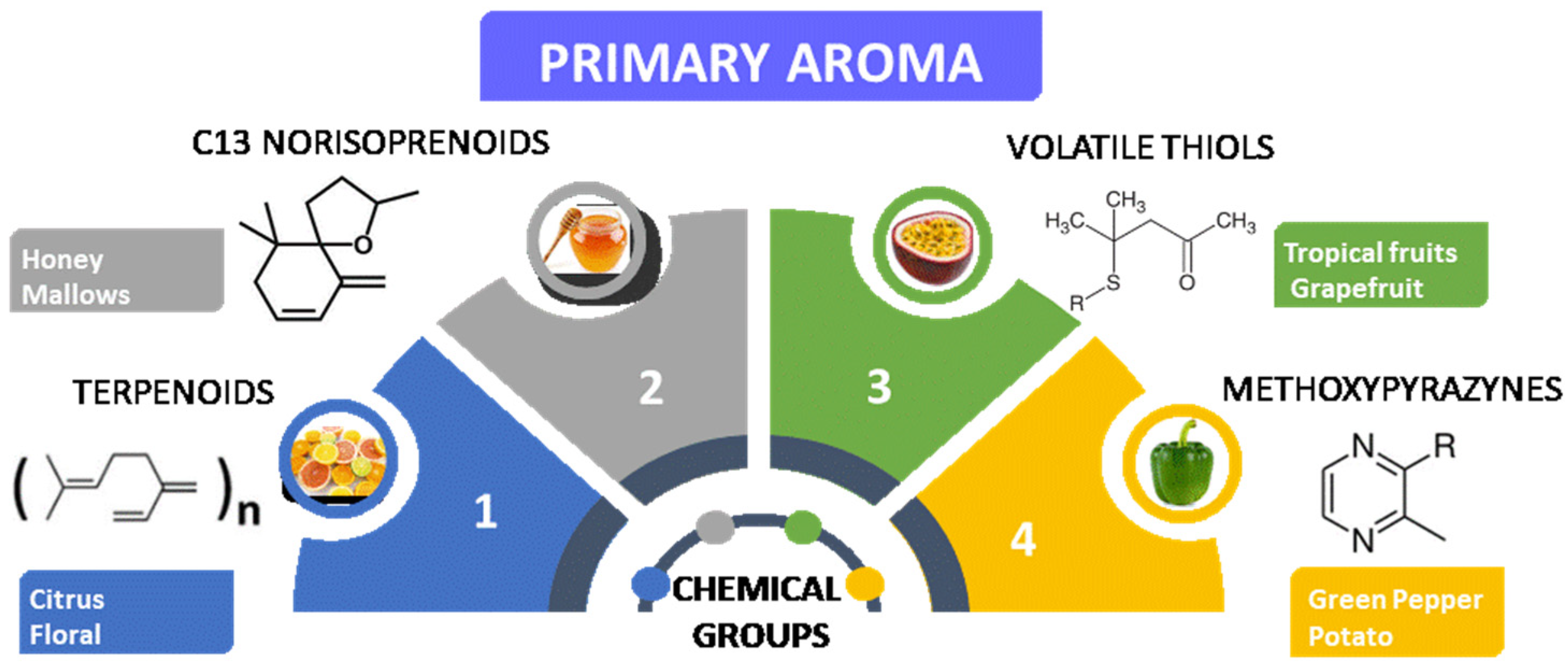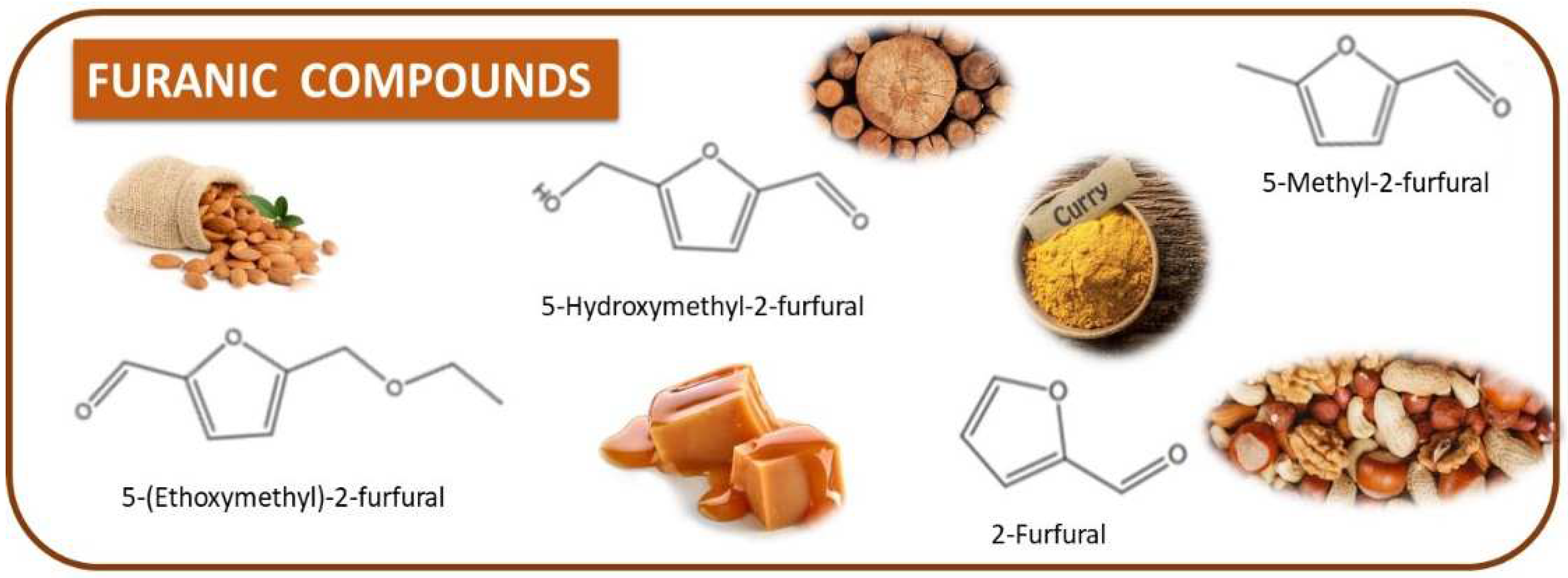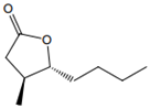Submitted:
19 June 2023
Posted:
21 June 2023
You are already at the latest version
Abstract
Keywords:
1. Introduction
2. The production of fortified wines – patterns and specificities
2.1. The microbiota of fortified wines fermentation
2.1.1. Portuguese
2.1.2. Spanish
2.1.3. Italian (UPO)
2.2. Fortified wines winemaking
2.2.1. Portuguese fortified wines
Madeira
Port
2.2.2. Spanish fortified wines
2.2.3. Italian fortified wines
Marsala
Vernaccia di Oristano liquoroso
Malvasia delle Lipari liquoroso
3. The chemical fingerprint of fortified wines
3.1. Portuguese fortified wines
3.2. Spanish fortified wines
3.3. Italian fortified wines
4. Concluding remarks
Author Contributions
Funding
Conflicts of Interest
References
- Perestrelo, R.; Albuquerque, F.; Rocha, S.M.; Camara, J.S. Distinctive characteristics of Madeira wine regarding its traditional winemaking and modern analytical methodologies. Adv. Food Nutr. Res. 2011, 63, 207–249. [Google Scholar] [CrossRef]
- Perestrelo, R.; Silva, C.; Pereira, J.; Câmara, J.S. Wines: Madeira, Port and Sherry Fortified Wines – The Sui Generis and Notable Peculiarities. Major Differences and Chemical Patterns. In Encyclopedia of Food and Health, Caballero, B., Finglas, P.M., Toldrá, F., Eds. Academic Press: Oxford, 2016; pp. 534–555. [CrossRef]
- Prata-Sena, M.; Castro-Carvalho, B.M.; Nunes, S.; Amaral, B.; Silva, P. The terroir of Port wine: Two hundred and sixty years of history. Food Chem. 2018, 257, 388–398. [Google Scholar] [CrossRef] [PubMed]
- Duran-Guerrero, E.; Castro, R.; Garcia-Moreno, M.V.; Rodriguez-Dodero, M.D.C.; Schwarz, M.; Guillen-Sanchez, D. Aroma of Sherry Products: A Review. Foods 2021, 10. [Google Scholar] [CrossRef] [PubMed]
- Abreu, T.; Perestrelo, R.; Bordiga, M.; Locatelli, M.; Daniel Coisson, J.; Camara, J.S. The Flavor Chemistry of Fortified Wines-A Comprehensive Approach. Foods 2021, 10. [Google Scholar] [CrossRef]
- Perestrelo, R.; Silva, C.; Gonçalves, C.; Castillo, M.; Câmara, J.S. An Approach of the Madeira Wine Chemistry. Beverages 2020, 6, 12. [Google Scholar] [CrossRef]
- Pretorius, I.S. Tailoring wine yeast for the new millennium: novel approaches to the ancient art of winemaking. [CrossRef]
- Lambrechts, M.G.; Pretorius, I.S. Yeast and its Importance to Wine Aroma - A Review. South African Journal of Enology & Viticulture 2019, 21. [Google Scholar] [CrossRef]
- Fleet, G.H. Wine yeasts for the future. FEMS Yeast Res. 2008, 8, 979–995. [Google Scholar] [CrossRef]
- Jolly, N.P.; Varela, C.; Pretorius, I.S. Not your ordinary yeast: non-Saccharomyces yeasts in wine production uncovered. FEMS Yeast Res. 2014, 14, 215–237. [Google Scholar] [CrossRef]
- García, M.; Esteve-Zarzoso, B.; Arroyo, T.; García, M.; Esteve-Zarzoso, B.; Arroyo, T. Non-Saccharomyces Yeasts: Biotechnological Role for Wine Production. Grape and Wine Biotechnology, 2016. [Google Scholar] [CrossRef]
- Fugelsang, K.C.; Edwards, C.G. Wine microbiology: Practical applications and procedures. Wine Microbiology: Practical Applications and Procedures 2007, 1–393. [CrossRef]
- Padilla, B.; Gil, J.V.; Manzanares, P. Past and future of non-Saccharomyces yeasts: From spoilage microorganisms to biotechnological tools for improving wine aroma complexity. In Frontiers in Microbiology, Frontiers Research Foundation: 2016; Vol. 7, pp 1–20.
- Aranda, A.; Matallana, E.; Olmo, M.d. Chapter 1 – Saccharomyces Yeasts I: Primary Fermentation. Molecular Wine Microbiology 2011, 1–31. [Google Scholar] [CrossRef]
- Pretorius, I.S.; Westhuizen, T.J.v.d.; Augustyn, O.P.H. Yeast Biodiversity in Vineyards and Wineries and Its Importance to the South African Wine Industry. A Review. South African Journal of Enology and Viticulture 1999, 20, 61–70. [Google Scholar] [CrossRef]
- Gambetta, J.M.; Bastian, S.E.P.; Cozzolino, D.; Jeffery, D.W. Factors Influencing the Aroma Composition of Chardonnay Wines. J. Agric. Food. Chem. 2014, 62, 6512–6534. [Google Scholar] [CrossRef] [PubMed]
- Mateus, D.; Sousa, S.; Coimbra, C.; Rogerson, F.S.; Simões, J. Identification and Characterization of Non- Saccharomyces Species Isolated from Port Wine Spontaneous Fermentations. Foods (Basel, Switzerland) 2020, 9. [Google Scholar] [CrossRef] [PubMed]
- Castillo, M.; da Silva, E.; Câmara, J.S.; Khadem, M. Molecular Identification and VOMs Characterization of Saccharomyces cerevisiae Strains Isolated from Madeira Region Winery Environments. Processes 2020, Vol. 8, Page 1058 2020, 8, 1058. [Google Scholar] [CrossRef]
- Esteve-Zarzoso, B.; Peris-Torán, M.J.; García-Maiquez, E.; Uruburu, F.; Querol, A. Yeast population dynamics during the fermentation and biological aging of sherry wines. Appl. Environ. Microbiol. 2001, 67, 2056–2061. [Google Scholar] [CrossRef]
- Cordero-Bueso, G.; Ruiz-Muñoz, M.; González-Moreno, M.; Chirino, S.; Bernal-Grande, M.d.C.; Cantoral, J.M. The Microbial Diversity of Sherry Wines. Fermentation 2018, Vol. 4, Page 19 2018, 4, 19. [Google Scholar] [CrossRef]
- Hannan, M.; Negro, G.; Rao, H.; Leung, M.D. No Barrique, No Berlusconi: Collective Identity, Contention, and Authenticity in the Making of Barolo and Barbaresco Wines. SSRN Electronic Journal 2007. [Google Scholar] [CrossRef]
- Capozzi, V.; Garofalo, C.; Chiriatti, M.A.; Grieco, F.; Spano, G. Microbial terroir and food innovation: The case of yeast biodiversity in wine. Microbiol. Res. 2015, 181, 75–83. [Google Scholar] [CrossRef]
- Zanfi, A.; Mencarelli, S. Marsala. Sweet, Reinforced and Fortified Wines: Grape Biochemistry, Technology and Vinification, 2016; 319–325. [Google Scholar] [CrossRef]
- Settanni, L.; Sannino, C.; Francesca, N.; Guarcello, R.; Moschetti, G. Yeast ecology of vineyards within Marsala wine area (western Sicily) in two consecutive vintages and selection of autochthonous Saccharomyces cerevisiae strains. J. Biosci. Bioeng. 2012, 114, 606–614. [Google Scholar] [CrossRef]
- Perestrelo, R.; Silva, C.; Câmara, J.S. Madeira wine volatile profile. A platform to establish madeirawine aroma descriptors. Molecules 2019, 24. [Google Scholar] [CrossRef]
- Reboredo-Rodríguez, P.; González-Barreiro, C.; Rial-Otero, R.; Cancho-Grande, B.; Simal-Gándara, J. Effects of sugar concentration processes in grapes and wine aging on aroma compounds of sweet wines—a review. Crit. Rev. Food Sci. Nutr. 2015, 55, 1053–1073. [Google Scholar] [CrossRef]
- Perestrelo, R.; Rodriguez, E.; Câmara, J.S.J.S. Impact of storage time and temperature on furanic derivatives formation in wines using microextraction by packed sorbent tandem with ultrahigh pressure liquid chromatography. LWT - Food Science and Technology 2017, 76, 40–47. [Google Scholar] [CrossRef]
- Martins, R.C.; Monforte, A.R.; Silva Ferreira, A. Port wine oxidation management: A multiparametric kinetic approach. J. Agric. Food. Chem. 2013, 61, 5371–5379. [Google Scholar] [CrossRef] [PubMed]
- Avdanina, D.; Zghun, A. Sherry Wines: Worldwide Production, Chemical Composition and Screening Conception for Flor Yeasts. Fermentation 2022, Vol. 8, Page 381 2022, 8, 381. [Google Scholar] [CrossRef]
- Carmona-Jiménez, Y.; Igartuburu, J.M.; Guillén-Sánchez, D.A.; García-Moreno, M.V. Fatty Acid and Tocopherol Composition of Pomace and Seed Oil from Five Grape Varieties Southern Spain. Molecules (Basel, Switzerland) 2022, 27. [Google Scholar] [CrossRef]
- Ferreira, I.M.P.L.V.O.; Pérez-Palacios, M.T. Anthocyanic Compounds and Antioxidant Capacity in Fortified Wines. In Processing and Impact on Antioxidants in Beverages, Elsevier Inc.: 2014; pp. 3–14. [CrossRef]
- Neu, I.D. An English Businessman in Sicily, 1806–1861. Business History Review 1957, 31, 355–374. [Google Scholar] [CrossRef]
- D’angelo, M. The Origins of the Florio: a Leading Family of Italian Entrepreneurs in the XIXth and XXth Centuries. The Journal of European economic history 1980, 9. [Google Scholar]
- Condurso, C.; Cincotta, F.; Tripodi, G.; Verzera, A. Characterization and ageing monitoring of Marsala dessert wines by a rapid FTIR-ATR method coupled with multivariate analysis. Eur. Food Res. Technol. 2018, 244, 1073–1081. [Google Scholar] [CrossRef]
- Petretto, G.; Urgeghe, P.P.; Cabizza, R.; Del Caro, A. Evaluation of volatile and chemical profile of sherry-like white wine Vernaccia di Oristano from Sardinia by comprehensive targeted and untargeted approach. Eur. Food Res. Technol. 2023. [Google Scholar] [CrossRef]
- Assovini.it. Vernaccia di Oristano DOC. Available online: https://www.assovini.it/italia/sardegna/item/426-vernaccia-di-oristano-doc (accessed on 8 June 2023).
- Scienza, A. Italian Passito Wines. In Sweet, Reinforced and Fortified Wines - Grape Biochemistry, Technology and Vinification Mencarelli, F., Bellincontro, A., Eds. John Wiley & Sons, Ltd: 2013.
- Alexandre, H. Flor yeasts of Saccharomyces cerevisiae—Their ecology, genetics and metabolism. Int. J. Food Microbiol. 2013, 167, 269–275. [Google Scholar] [CrossRef]
- Assovini.it. Malvasia delle Lipari DOC. Available online: https://www.assovini.it/italia/sicilia/item/438-malvasia-delle-lipari-doc (accessed on 8 June 2023).
- Piombino, P.; Genovese, A.; Gambuti, A.; Lamorte, S.A.; Lisanti, M.T.; Moio, L. Effects of off-vine bunches shading and cryomaceration on free and glycosilated flavours of Malvasia delle Lipari wine. Int. J. Food Sci. Tech. 2010, 45, 234–244. [Google Scholar] [CrossRef]
- Arena, E.; Rizzo, V.; Licciardello, F.; Fallico, B.; Muratore, G. Effects of Light Exposure, Bottle Colour and Storage Temperature on the Quality of Malvasia delle Lipari Sweet Wine. Foods 2021, 10. [Google Scholar] [CrossRef] [PubMed]
- Camara, J.S.; Marques, J.C.; Alves, M.A.; Silva Ferreira, A.C. 3-Hydroxy-4,5-dimethyl-2(5H)-furanone levels in fortified Madeira wines: relationship to sugar content. J. Agric. Food. Chem. 2004, 52, 6765–6769. [Google Scholar] [CrossRef] [PubMed]
- Câmara, J.S.; Alves, M.A.; Marques, J.C. Changes in volatile composition of Madeira wines during their oxidative ageing. Anal. Chim. Acta 2006, 563, 188–197. [Google Scholar] [CrossRef]
- Pereira, V.; Santos, M.; Cacho, J.; Marques, J.C. Assessment of the development of browning, antioxidant activity and volatile organic compounds in thermally processed sugar model wines. LWT 2017, 75, 719–726. [Google Scholar] [CrossRef]
- Miranda, A.; Pereira, V.; Pontes, M.; Albuquerque, F.; Marques, J.C. Acetic acid and ethyl acetate in Madeira wines: Evolution with ageing and assessment of the odour rejection threshold. Ciência e Técnica Vitivinícola 2017, 32, 1–11. [Google Scholar] [CrossRef]
- Perestrelo, R.; Silva, C.L.; Silva, P.; Câmara, J.S. Impact of storage time and temperature on volatomic signature of Tinta Negra wines by LLME/GC-ITMS. Food Res. Int. 2018, 109, 99–111. [Google Scholar] [CrossRef]
- Pereira, V.; Leça, J.M.; Gaspar, J.M.; Pereira, A.C.; Marques, J.C. Rapid determination of sotolon in fortified wines using a miniaturized liquid-liquid extraction followed by LC-MS/MS analysis. Journal of Analytical Methods in Chemistry 2018, 2018, 1–7. [Google Scholar] [CrossRef]
- Silva Ferreira, A.C.; Monteiro, J.; Oliveira, C.; Guedes de Pinho, P. Study of major aromatic compounds in port wines from carotenoid degradation. Food Chem. 2008, 110, 83–87. [Google Scholar] [CrossRef]
- Oliveira e Silva, H.; de Pinho, P.G.; Machado, B.P.; Hogg, T.; Marques, J.C.; Camara, J.S.; Albuquerque, F.; Ferreira, A.C. Impact of forced-aging process on madeira wine flavor. J. Agric. Food. Chem. 2008, 56, 11989–11996. [Google Scholar] [CrossRef]
- Perestrelo, R.; Nogueira, J.M.F.; Câmara, J.S. Potentialities of two solventless extraction approaches-Stir bar sorptive extraction and headspace solid-phase microextraction for determination of higher alcohol acetates, isoamyl esters and ethyl esters in wines. Talanta 2009, 80. [Google Scholar] [CrossRef]
- Pereira, A.C.; Reis, M.S.; Saraiva, P.M.; Marques, J.C. Analysis and assessment of Madeira wine ageing over an extended time period through GC-MS and chemometric analysis. Anal. Chim. Acta 2010, 660, 8–21. [Google Scholar] [CrossRef]
- Perestrelo, R.; Barros, A.S.S.; Câmara, J.S.S.; Rocha, S.M.M. In-depth search focused on furans, lactones, volatile phenols, and acetals as potential age markers of Madeira wines by comprehensive two-dimensional gas chromatography with time-of-flight mass spectrometry combined with solid phase microextraction. J. Agric. Food. Chem. 2011, 59, 3186–3204. [Google Scholar] [CrossRef] [PubMed]
- Pereira, V.; Cacho, J.; Marques, J.C. Volatile profile of Madeira wines submitted to traditional accelerated ageing. Food Chem. 2014, 162, 122–134. [Google Scholar] [CrossRef] [PubMed]
- Oliveira, C.M.; Santos, S.A.O.; Silvestre, A.J.D.; Barros, A.S.; Ferreira, A.C.S.; Silva, A.M.S. Quantification of 3-deoxyglucosone (3DG) as an aging marker in natural and forced aged wines. Journal of Food Composition and Analysis 2016, 50, 70–76. [Google Scholar] [CrossRef]
- Campo, E.; Ferreira, V.; Escudero, A.; Marqués, J.C.; Cacho, J. Quantitative gas chromatography-olfactometry and chemical quantitative study of the aroma of four Madeira wines. Anal. Chim. Acta 2006, 563, 180–187. [Google Scholar] [CrossRef]
- Culleré, L.; Cacho, J.; Ferreira, V. An assessment of the role played by some oxidation-related aldehydes in wine aroma. J. Agric. Food. Chem. 2007, 55, 876–881. [Google Scholar] [CrossRef]
- Zea, L.; Serratosa, M.P.; Mérida, J.; Moyano, L. Acetaldehyde as Key Compound for the Authenticity of Sherry Wines: A Study Covering 5 Decades. Comprehensive Reviews in Food Science and Food Safety 2015, 14, 681–693. [Google Scholar] [CrossRef]
- Martínez, P.; Pérez Rodríguez, L.; Benítez, T. Evolution of Flor Yeast Population During the Biological Aging of Fino Sherry Wine. American Journal of Enology and Viticulture 1997, 48, 160–168. [Google Scholar] [CrossRef]
- Zea, L.; Serratosa, M.P.; Monforte, A.; Ferreira, A.C.S. Fortified wines. Managing Wine Quality: Volume 2: Oenology and Wine Quality, 2021; -8, 629–668. [Google Scholar] [CrossRef]
- Moreno, J.A.; Zea, L.; Moyano, L.; Medina, M. Aroma compounds as markers of the changes in sherry wines subjected to biological ageing. Food Control 2005, 16, 333–338. [Google Scholar] [CrossRef]
- Pe, L.J.; Rez-Prieto, Ä.; Lo Ä Pez-Roca, J.M.; Marti Änez-Cutillas, A.; Pardo, F.; Änguez, M.I.; Go, E.; Mez-Plaza, Ä. Maturing Wines in Oak Barrels. Effects of Origin, Volume, and Age of the Barrel on the Wine Volatile Composition. 2002. [CrossRef]
- Herrera, P.; Durán-Guerrero, E.; Sánchez-Guillén, M.M.; García-Moreno, M.V.; Guillén, D.A.; Barroso, C.G.; Castro, R. Effect of the type of wood used for ageing on the volatile composition of Pedro Ximénez sweet wine. J. Sci. Food Agric. 2020, 100, 2512–2521. [Google Scholar] [CrossRef]
- Muñoz, D.; Peinado, R.A.; Medina, M.; Moreno, J. Higher alcohols concentration and its relation with the biological aging evolution. Eur. Food Res. Technol. 2006, 222, 629–635. [Google Scholar] [CrossRef]
- Fernández De Simón, B.; Cadahía, E.; Jalocha, J. Volatile Compounds in a Spanish Red Wine Aged in Barrels Made of Spanish, French, and American Oak Wood. J. Agric. Food. Chem. 2003, 51, 7671–7678. [Google Scholar] [CrossRef]
- Zea, L.; Moyano, L.; Moreno, J.; Cortes, B.; Medina, M. Discrimination of the aroma fraction of Sherry wines obtained by oxidative and biological ageing. Food Chem. 2001, 75, 79–84. [Google Scholar] [CrossRef]
- Moyano, L.; Zea, L.; Moreno, J.; Medina, M. Analytical study of aromatic series in sherry wines subjected to biological aging. J. Agric. Food. Chem. 2002, 50, 7356–7361. [Google Scholar] [CrossRef]
- Zea, L.; Moyano, L.; Moreno, J.A.; Medina, M. Aroma series as fingerprints for biological ageing in fino sherry-type wines. J. Sci. Food Agric. 2007, 87, 2319–2326. [Google Scholar] [CrossRef]
- Zea, L.; Moyano, L.; Ruiz, M.J.; Medina, M. Chromatography-Olfactometry Study of the Aroma of Fino Sherry Wines. International Journal of Analytical Chemistry 2010, 2010, 1–5. [Google Scholar] [CrossRef] [PubMed]
- Moyano, L.; Zea, L.; Moreno, J.A.; Medina, M. Evaluation of the active odorants in Amontillado sherry wines during the aging process. J. Agric. Food. Chem. 2010, 58, 6900–6904. [Google Scholar] [CrossRef]
- Zea, L.; Moyano, L.; Ruiz, M.J.; Medina, M. Odor Descriptors and Aromatic Series During the Oxidative Aging of Oloroso Sherry Wines. Int. J. Food Prop. 2013, 16, 1534–1542. [Google Scholar] [CrossRef]
- García-Moreno, M.V.; Sánchez-Guillén, M.M.; Delgado-González, M.J.; Durán-Guerrero, E.; Rodríguez-Dodero, M.C.; García-Barroso, C.; Guillén-Sánchez, D.A. Chemical content and sensory changes of Oloroso Sherry wine when aged with four different wood types. LWT 2021, 140, 110706. [Google Scholar] [CrossRef]
- Dugo, G.; Franchina, F.A.; Scandinaro, M.R.; Bonaccorsi, I.; Cicero, N.; Tranchida, P.Q.; Mondello, L. Elucidation of the volatile composition of Marsala wines by using comprehensive two-dimensional gas chromatography. Food Chem. 2014, 142, 262–268. [Google Scholar] [CrossRef]
- Muratore, G.; Asmundo, C.; Lanza, C.; Caggia, C.; Licciardello, F.; Restuccia, C. Influence of Saccharomyces uvarum on Volatile Acidity, Aromatic and Sensory Profile of Malvasia delle Lipari Wine. Food Technol. Biotechnol. 2007, 45, 101–106. [Google Scholar]




| VOMs | Structure | Odour descriptor | OT (µg/L) |
|---|---|---|---|
| α-Terpeniol |  |
Warm peppery, mildly earthy, musty woody | 110 |
| Linalool |  |
Citrus, floral, fruity, green, muscat, sweet | 15 |
| β-Damascenone |  |
Sweet, exotic flowers, stewed apple | 4 |
| β-Ionone |  |
Violet, rose | 0.09 |
| Acetaldehyde | CH3CHO | Apple | 100 |
| 2-Nonenal isomer |  |
Green, fatty | 3 |
| Methional |  |
Cooked potato, cabbage | 0.5 |
| Phenylacetaldehyde |  |
Floral, honey | 1 |
| Sotolon |  |
Curry, seasoning | 8 |
| γ-Butyrolactone |  |
Caramel, sweet | - |
| cis-oak lactone |  |
Coconut | 25 |
| trans-oak lactone |  |
Coconut | 110 |
| 1,1-Diethoxyethane | CH3CH(OCH2CH3)2 | Green fruit | 1400 |
| Dioxolane and dioxane isomers |  |
Port-like, sweet | 100000 |
Disclaimer/Publisher’s Note: The statements, opinions and data contained in all publications are solely those of the individual author(s) and contributor(s) and not of MDPI and/or the editor(s). MDPI and/or the editor(s) disclaim responsibility for any injury to people or property resulting from any ideas, methods, instructions or products referred to in the content. |
© 2023 by the authors. Licensee MDPI, Basel, Switzerland. This article is an open access article distributed under the terms and conditions of the Creative Commons Attribution (CC BY) license (http://creativecommons.org/licenses/by/4.0/).





